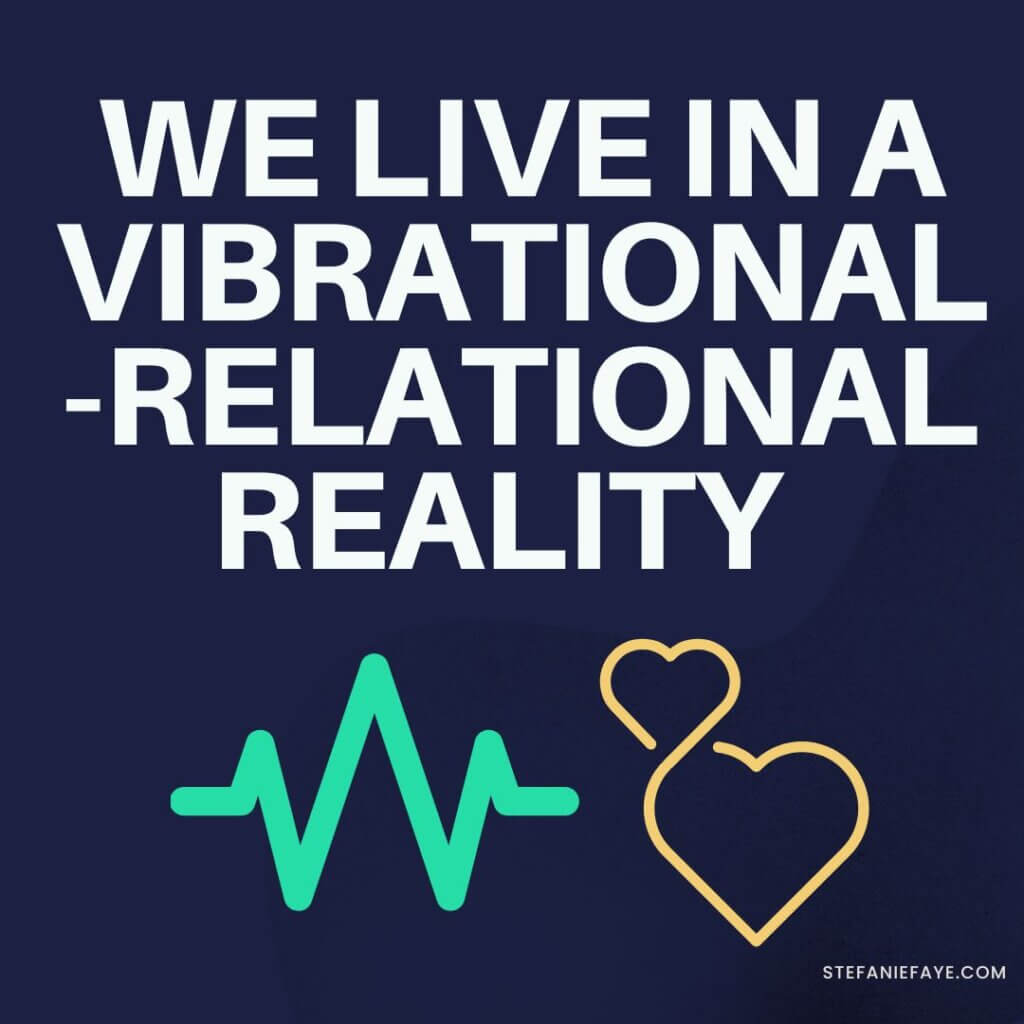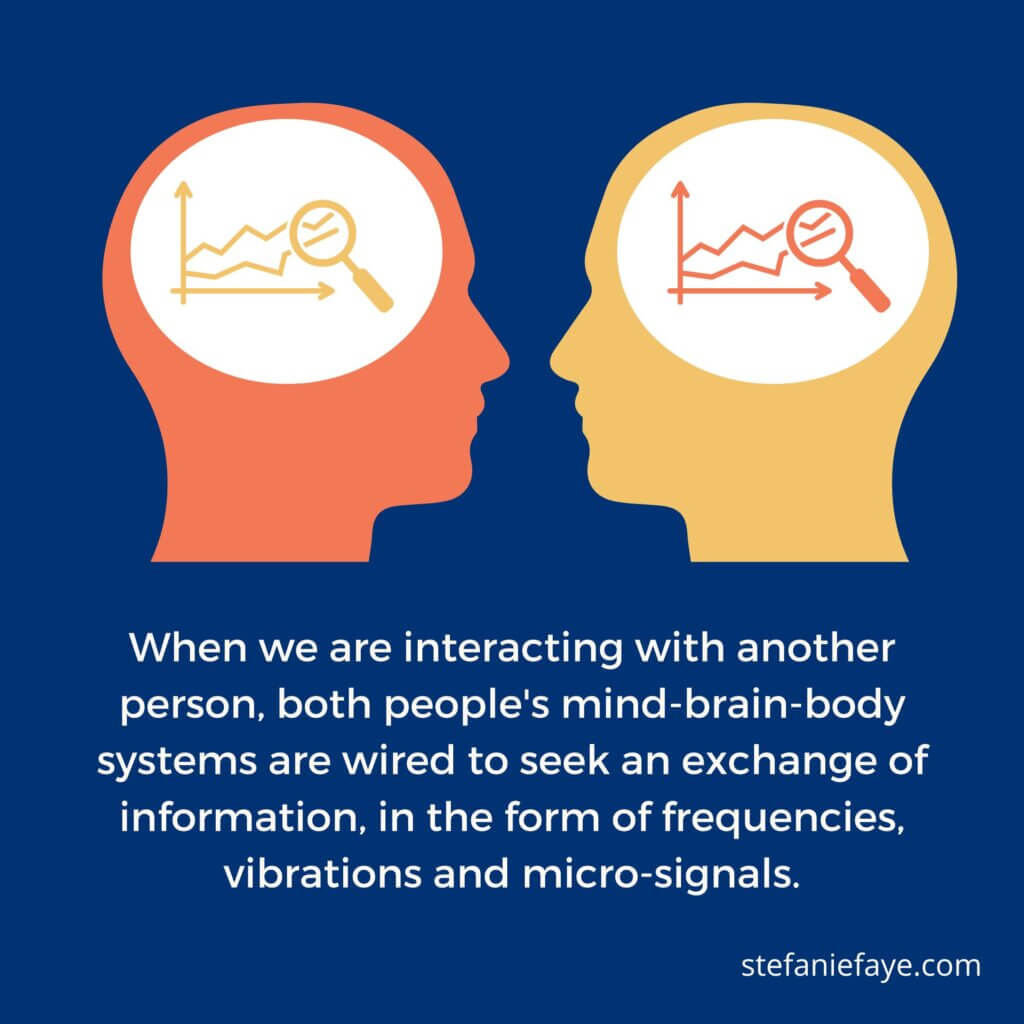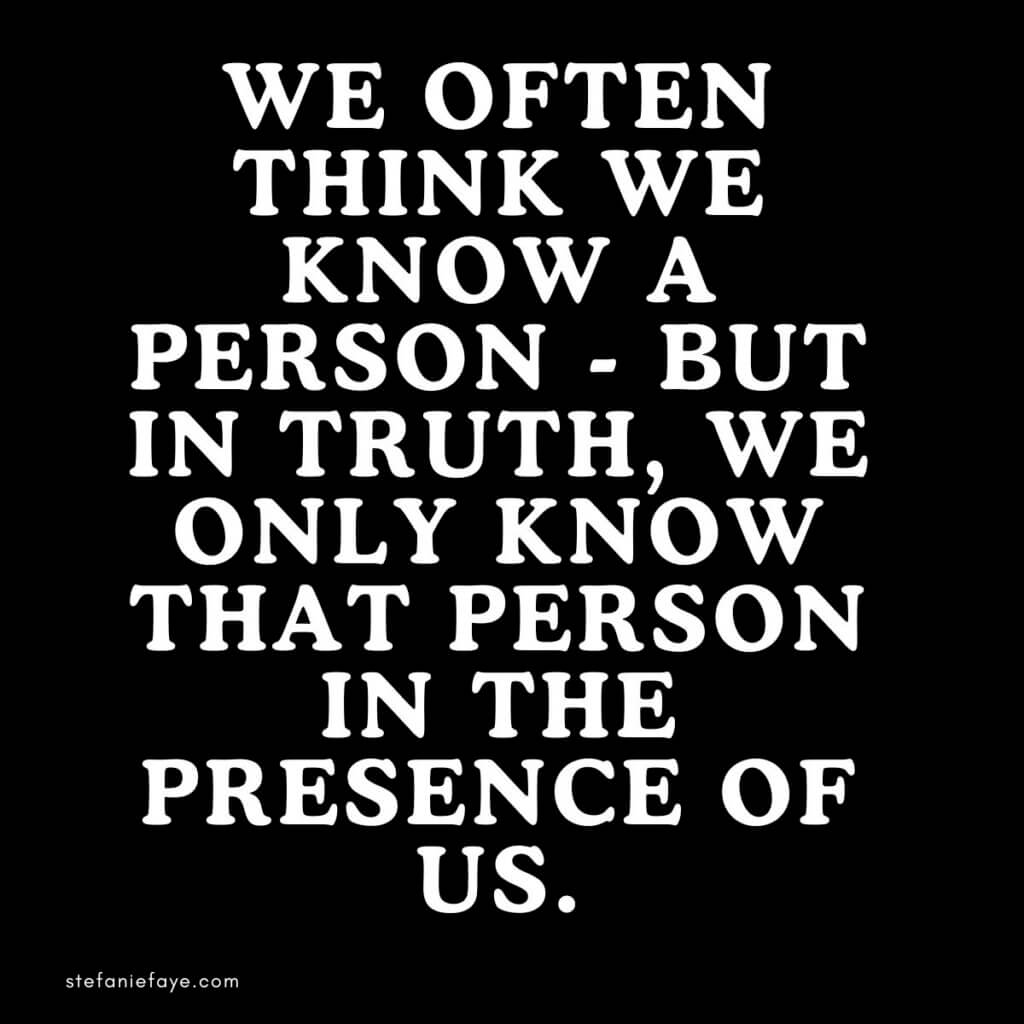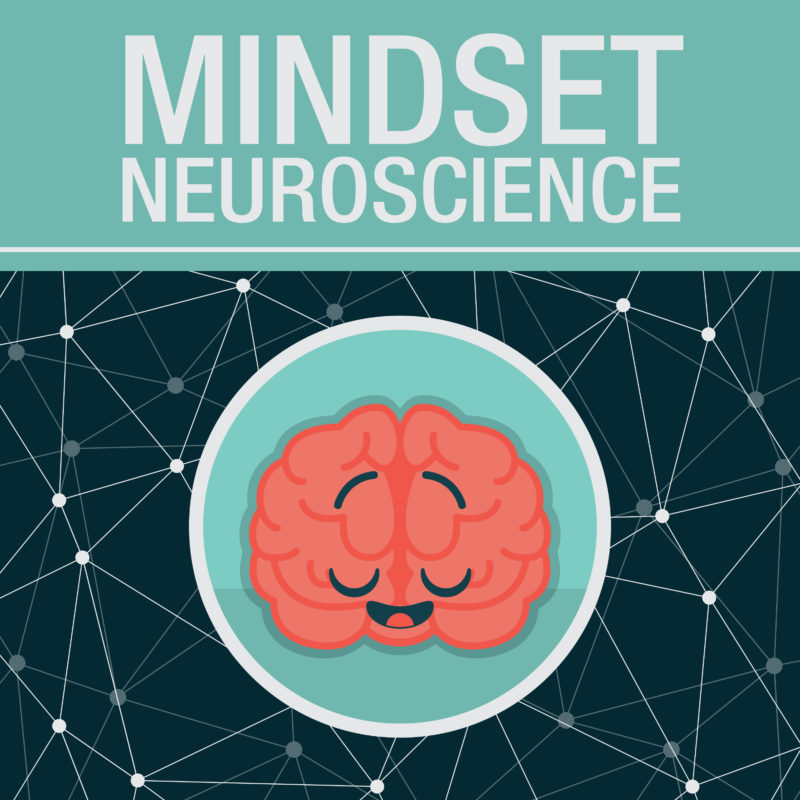Do you have something important to teach others, but they just don’t seem to get it or care?
Part of the issue may be that WHAT you’re saying needs to be more compelling, but another issue might be in HOW you are coming across.
We are VIBRATIONAL BEINGS.
Our vibrations and frequencies are being transmitted and detected at all times (in person and online) whether we are aware of them or not.
In order to create space for others to lean into what we are teaching or facilitating, leaders and educators must create vibrational conditions that help others get into an optimized state for learning and curiosity.
(related: Vibrational Availability: how our brain distorts people and reality)
The key to this is MICRO-MOVEMENTS & MICRO-SIGNALS
‘micro-movements’ or ‘micro-signals are HUGE when it comes to HOW you come across to another person.
These micromovements are based on your:
-
INTERNAL STATE: how you are feeling
-
INTENTIONS: what you are trying to do
If your internal state and your intentions are focused on creating trust and safety with another person, your micro-movements and micro-signals will reflect that.
If your intentions are to correct, control, convince or change a person - they’ll also sense this from you.
Yes, as a leader or teacher, you want to help people improve certain habits, which requires change, correction and convincing. But you can’t start interactions with that as your intention.
I’ve seen many teachers and leaders who want a person to do well, but they come across with the ‘vibe’ that they need to convince that person to change who they are. This often ends up in the other person feeling defensive and resistant.
In order for you to have the impact you are hoping for, the people you are trying to influence need to be WILLING to be influenced by you.
How do you increase the chances of this?
By building trust and psychological safety first.
Your ability to do this will come from a sense of ‘steadiness’ and safety that you create for yourself first, and then carry that into your interactions with others.
If you can create this sense of steadiness, other people sense it from you. If you don’t, other people may feel either ‘on edge’ around you, or this will come out as they just don’t particularly want to follow what you say because your ‘vibe’ is not something they want to emulate for themselves.

Being a source of safety and steadiness gives people a sense that you are rooted, centered.
It makes you an ‘eye in the storm’ of human emotion and reactivity.
There are not many people in this world who radiate that sense of steadiness so you will also stand out from the crowd. Being able to do that will increase the chance that others will be WILLING to listen and learn from you.
When you can give someone the feeling that they can finally let out their breath and relax when they’re in your presence, that’s when their nervous system will allow the highest structures of their brain to get the blood flow they need for creativity and focus. That is the internal state you want to model and inspire in others to help them truly perform at their best.
If you create a sense of defensiveness in others - where they feel like who they are is not enough in your presence, you will keep them in that state of self-protection.
And this will lead their brain-body system to appraise the situation (and your communication) as a THREAT - to their status, value and identity.
When the brain-body appraises a person or event as threatening (this often includes feedback about needing to correct, update or change an output they have produced), the nervous system moves into evolution-based activity. This can include increased cortisol, lower testosterone and restriction of blood flow to conserve the body's resources (Yeager, 2024).
That threat response in turn deteriorates their performance and can keep their brain activity from processing 'learning-relevant' information and feedback to help them grow (Mangels, 2006).
We often think we know a person - but in truth, we only know that person in the presence of US.
Yes, they are responsible for the signals they send out - but we must understand that our signals affect them.
One more thing before we go into the micro-movements… the most self-aware person must take the lead in attempting to create trust and safety.
There is no other way! If a person is not aware of how they come across, it means those brain structures are not accessible in the moment.
If you are able to become more aware of your own signals and internal state, you have a chance of helping someone else get to that place themselves.
Here are the five ‘micro-movements’ you can become more aware of to help you facilitate a sense of safety, trust and steadiness for those around you.
#1) Vocal Prosody.
The amount of tiny, microscopic movements that go into speaking is truly astounding.
Just think about it:
- Something builds in you that you want to express.
- You inhale oxygen to prepare to speak.
- Tiny movements within your diaphragm push air out depending on how loud or softly, slowly or quickly you will express yourself.
- Air then flows up through a passage that gets played like a musical instrument by the muscles that twitch and tighten, open and close to give you a precise frequency and tone to say what you are thinking and feeling.
The more playful you are, the more musical this will sound.
The more serious you are, the more flat and rigid these frequencies will be.
The calmer you are, the more soothing these sounds will be.
When you are anxious or stressed, these sounds will be flatter and harsher.
(my book, Biomechanics of Communication and online group program cover extensive research on this).
Being more intentional about truly wanting another person to feel like they can let their guard down with you will impact all of these micro-movements and the resulting frequencies you send out with your vocal muscles.

#2) Facial Muscles:
the softer the tension of your facial muscles - especially around your jaw - the safer someone will feel with you. If you can internally get yourself to a place where you feel a softness or a slight wrinkling around your eyes and smoothing of your forehead, these are indications that you feel calm. These micro-signals will be sensed by the other person.
#3) Middle Ear Muscle tension.
Middle ear muscles help us tune into the sound of another human's voice.
Are you focusing on the sound of their voice, or are you just waiting until they finish speaking so you can jump in and make your point? Try to also increase your awareness to the space in between the sounds. By allowing a little more room and space in an interaction, you give time for the higher brain structures to be able to join in.
The faster you speak, and the faster you react and respond, the more likely you will trigger someone else to speed up the pace. This faster pace keeps the more reactive and reflexive features of the brain and nervous system going.
[This also goes for texting! The faster the pace of your texting, the more likely it is coming from a frantic state. If you’re having an emotionally charged conversation with someone (not recommended for texting, but hey, it happens), see if you can take at least a few breaths before you read their text, and then again before you respond.]
#4) Breathing.
Are you breathing really fast and shallow, or are you aware of your breath and able to slow it down? Purposely slowing down your breathing recruits the vagus nerve (which acts like a brake on the heart). It’s part of the human defense system that allows us to approach or avoid others depending on how safe we feel around them. If you can recruit your vagus nerve to slow down your breathing, you are sending out micro-signals to the other person that you feel safe and your intention is to build safety with them.
See related articles on breathing:
#5) Electric activity of your skin.
This is not something you control consciously but will be a result of your internal state.
When your sympathetic system gets aroused (it’s the system that opens blood flow to your skeletal muscles to get ready for ‘limb movement’), your skin conducts electricity differently. By having daily practices that bring you into a calm, steady, focused state. (meditation is my #1 recommendation), you strengthen the heart-brain-body circuitry that allows you to regulate yourself at will.
The more you push yourself to become aware of the above five things, the more you activated brainwaves and brain-body systems related to self-awareness and executive control.
These in turn help you attune and adjust to yourself and others in ways that create psychological safety and vibrational conditions for learning, openness and curiosity - rather than restriction, rigidity and self-defense.
This also creates micro-signals to others that you are someone who can create steadiness deliberately. It’s also an indication of ‘frontal lobe maturity’ (especially the prefrontal cortex).
Related: How to slow down anxious thinking using neuroscience
The ability to create steadiness and psychological safety with others is something that true leaders need to have in order to help others access their most evolved potential.
References and Related Resources:
Yeager, D. (2024) 10 to 25: the Science of Motivating Young People
Signals, Vibrations and Frequencies that affect your relationships - StefanieFaye
Being able to feel safe with other people is probably the single most important aspect of mental health; safe connections are fundamental to meaningful and satisfying lives.*”
- Bessel Van Der Kolk
*there is nuance to this: we also need challenge and support to meet those demands (vs. lowering challenge, but offering only safety and support - this is referred to as a 'protector mindset' (Yeager, 2024). I'll be going into various mindsets in an upcoming podcast and article.
FREE EVENT!
Watch leaders, coaches and professionals from all over the globe present how they are using neuroscience to elevate their work as Super-Regulators!
This will be a series of short (3-5 minute) "Ted" like talks about a variety of topics relevant to coaching, leadership, education and mental health.
When: Tuesday September 23rd
Where: Online
Cost: FREE
(more details coming up in future emails!)




